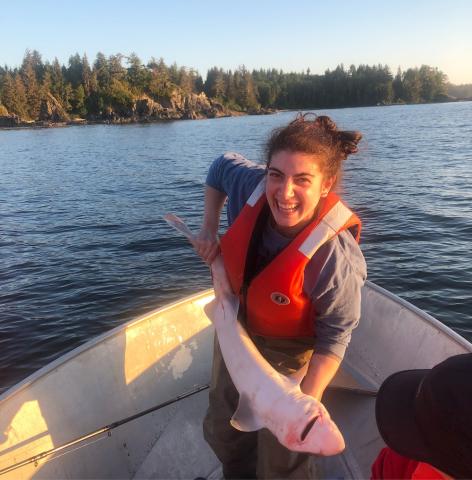-
Sept. 25, 2019
4:45 p.m. - 6 p.m.
 Schaefer Hall-106
Schaefer Hall-106Intended Audience
FacultyStaffStudentsGeneral public
Sharks, stingrays, and skates (elasmobranchs) are considered some of the most primitive living fish, and still aspects of their physiology remain a mystery. In particular, there are large knowledge gaps concerning elasmobranch energy regulation. The vertebrate endocrine system plays a critical regulatory role in controlling energy balance, particularly during periods of increased energy demand. One such activity is the activation of the endocrine stress axis, which by definition demands mobilization of energy to reestablish internal equilibrium in response to a deviation in homeostasis. Corticosteroids play a key function in the stress axis by regulating either mineral or energy balance. 1α-hydroxycorticosterone (1α-OHB) is the dominant corticosteroid in elasmobranchs, but its role in energy balance is largely unknown. This study is the first to investigate the predicted role of 1α-OHB in the elasmobranch stress response, using several techniques, including: organic chemical synthesis, enzyme biochemistry, and classical endocrinology. Ultimately, the future conservation of elasmobranchs will be hopefully be improved by understanding these physiological intricacies.
Event Sponsor(s)
Charles AdlerJessica Malischjlmalisch@smcm.edu2408954372Lecture
